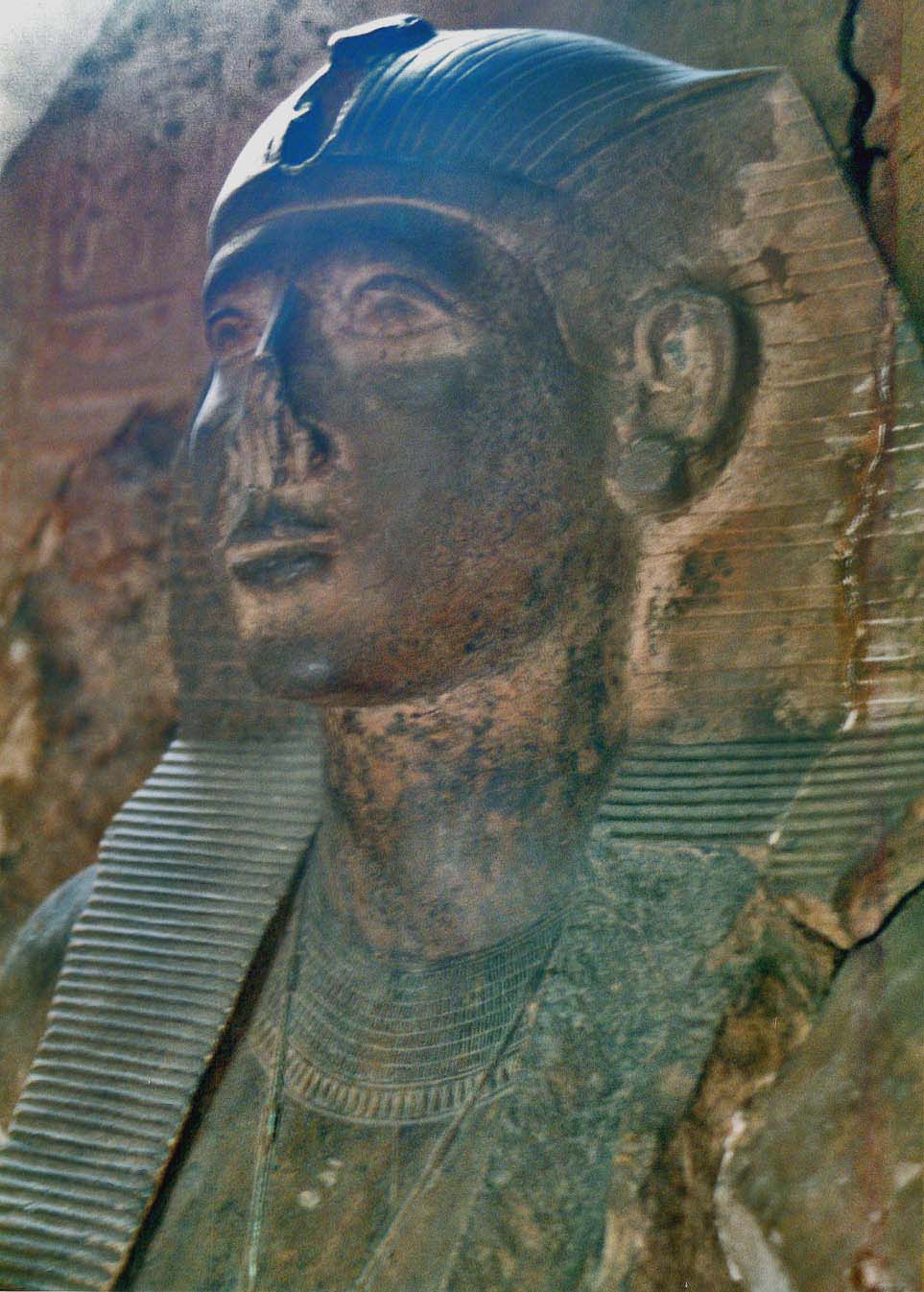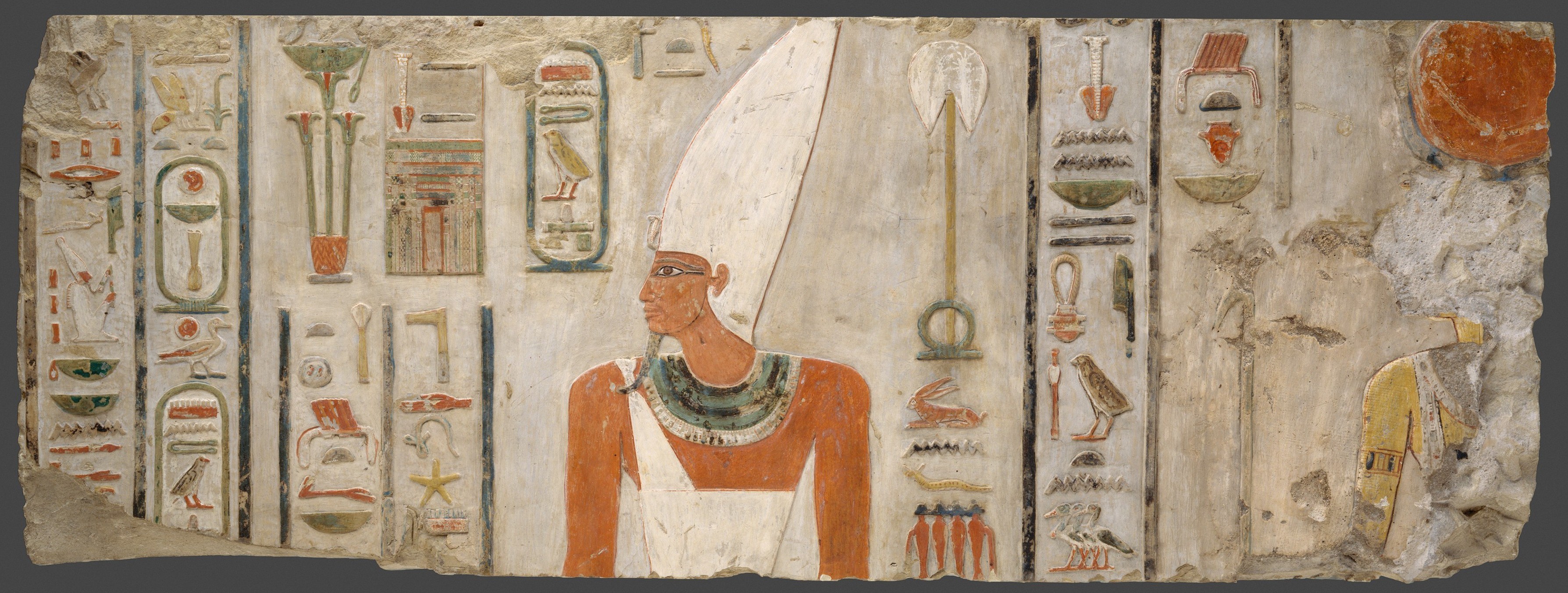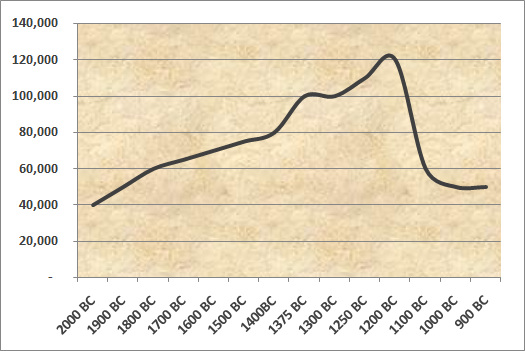|
Abydos Dynasty
The Abydos Dynasty is hypothesized to have been a short-lived local dynasty ruling over parts of Middle and Upper Egypt during the Second Intermediate Period in Ancient Egypt. The Abydos Dynasty would have been contemporaneous with the Fifteenth and Sixteenth Dynasties, from approximately 1650 to 1600 BC. It would have been based in or around Abydos and its royal necropolis might have been located at the foot of the ''Mountain of Anubis'', a hill resembling a pyramid in the Abydene desert, close to a rock-cut tomb built for pharaoh Senusret III. Debate over existence Evidence in favor The existence of an Abydos Dynasty was first proposed by Detlef Franke and later elaborated on by Kim Ryholt in 1997. Ryholt observes that two attested kings of this period, Wepwawetemsaf (''Wepwawet is his protection'') and Pantjeny (''He of Thinis''), bore names in connection with Abydos: Wepwawet being an important Abydene god and Thinis being a prominent city, located a few miles north ... [...More Info...] [...Related Items...] OR: [Wikipedia] [Google] [Baidu] |
Abydos, Egypt
Abydos ( or ; Sahidic ') is one of the oldest cities of ancient Egypt, and also of the Ta-wer, eighth Nome (Egypt), nome in Upper Egypt. It is located about west of the Nile at latitude 26° 10' N, near the modern Egyptian towns of El Araba El Madfuna and El Balyana. In the ancient Egyptian language, the city was called Abedju (''ꜣbḏw'' or ''AbDw'')(Arabic Abdu عبد-و). The English name ''Abydos'' comes from the Greek language, Greek , a name borrowed by Greek geographers from the unrelated city of Abydos, Hellespont, Abydos on the Hellespont. Considered one of the most important archaeological sites in Egypt, the sacred city of Abydos was the site of many ancient Egyptian temple, temples, including Umm el-Qa'ab, a royal necropolis where early pharaohs were entombed. These tombs began to be seen as extremely significant burials and in later times it became desirable to be buried in the area, leading to the growth of the town's importance as a cult site. Today, Abydos ... [...More Info...] [...Related Items...] OR: [Wikipedia] [Google] [Baidu] |
Wepwawet
In Egyptian mythology, Wepwawet ( hieroglyphic ''wp-w3w.t''; also rendered Upuaut, Wep-wawet, Wepawet, Apuat, and Ophois) was originally a jackal deity of funerary rites, war, and royalty, whose cult centre was Asyut in Upper Egypt (Lycopolis in the Greco-Roman period). His name means ''opener of the ways'' and he is often depicted as a wolf standing at the prow of a solar-boat. Some interpret that Wepwawet was seen as a scout, going out to clear routes for the army to proceed forward. One inscription from the Sinai states that Wepwawet "opens the way" to king Sekhemkhet's victory.Remler, p.170 In royal and religious processions, Wepwawet was often depicted on the first standard, opening the way for subsequent standards. He also stands at the prow of the Barque of Ra, usually in human-headed form. Wepwawet originally was seen as a jackal, or, according to some, a wolf deity, with his cult center being at the '' Lycopolis'', (meaning ''city of wolves'' in Greek). He is one of t ... [...More Info...] [...Related Items...] OR: [Wikipedia] [Google] [Baidu] |
Neferhotep I
Khasekhemre Neferhotep I was an Ancient Egypt, Egyptian pharaoh of the mid Thirteenth dynasty of Egypt, Thirteenth Dynasty ruling in the second half of the 18th century BCKim Ryholt, Ryholt, K.S.B: The Political Situation in Egypt During the Second Intermediate Period, c.1800–1550 BC', Carsten Niebuhr Institute Publications, 20. Copenhagen: Museum Tusculanum Press, (1997). . . . during a time referred to as the late Middle Kingdom of Egypt, Middle Kingdom or early Second Intermediate Period, depending on the scholar. One of the best attested rulers of the 13th Dynasty, Neferhotep I reigned for 11 years according to the Turin King List. The grandson of a non-royal townsman from a Thebes, Egypt, Theban family with a military background, Neferhotep I's relation to his predecessor Sobekhotep III is unclear and he may have usurped the throne. Neferhotep I was likely contemporaneous with kings Zimri-Lim of Mari, Syria, Mari and Hammurabi of Babylon. Little is known of his activities ... [...More Info...] [...Related Items...] OR: [Wikipedia] [Google] [Baidu] |
S 10 (Abydos)
S 10 (also Abydos-south S10) is the modern name given to a monumental ancient Egyptian tomb complex at Abydos in Egypt. The tomb is most likely royal and dates to the mid-13th Dynasty. Finds from nearby tombs indicate that S10 suffered extensive state-sanctioned stone and grave robbing during the Second Intermediate Period, only a few decades after its construction, as well as during the later Roman and Coptic periods. These finds also show that S10 was used for an actual burial and belonged to a king "Sobekhotep", now believed to be pharaoh Sobekhotep IV (fl. c. 1725 BC). According to the Egyptologist Josef W. Wegner who excavated S10, the tomb might originally have been capped by a pyramid, although Aidan Dodson states that it is still unclear whether S10 was a pyramid or a mastaba. Description The tomb structure is part of a royal necropolis dating back to the late Middle Kingdom – Second Intermediate Period, which is located close to the ancient town of Wah-Sut, next to th ... [...More Info...] [...Related Items...] OR: [Wikipedia] [Google] [Baidu] |
S 9 (Abydos)
S 9 (also Abydos-south S9) is the modern name given to a monumental ancient Egyptian tomb complex at Abydos, Egypt, Abydos in Egypt. The tomb is most likely royal and dates to the mid-Thirteenth dynasty of Egypt, 13th Dynasty, during the late Middle Kingdom of Egypt, Middle Kingdom. Finds from the area of the tomb indicate that S9 suffered extensive, state-sanctioned stone and grave robbing during the Second Intermediate Period, only a few decades after its construction, as well as during the later Egypt (Roman province), Roman and Coptic periods. Although no direct evidence was found to determine the tomb owner, strong indirect evidence suggest that the neighbouring and slightly smaller tomb S 10 (Abydos), S10 belongs to pharaoh Sobekhotep IV (fl. c. 1725 BC). Consequently, S9 has been tentatively attributed by the Egyptologist Josef W. Wegner to Sobekhotep IV's predecessor and brother, Neferhotep I (fl. c. 1735 BC). According to Wegner, the tomb might originally have been capped b ... [...More Info...] [...Related Items...] OR: [Wikipedia] [Google] [Baidu] |
Middle Kingdom Of Egypt
The Middle Kingdom of Egypt (also known as The Period of Reunification) is the period in the history of ancient Egypt following a period of political division known as the First Intermediate Period of Egypt, First Intermediate Period. The Middle Kingdom lasted from approximately 2040 to 1782 BC, stretching from the reunification of Egypt under the reign of Mentuhotep II in the Eleventh Dynasty of Egypt, Eleventh Dynasty to the end of the Twelfth Dynasty of Egypt, Twelfth Dynasty. The kings of the Eleventh Dynasty ruled from Thebes, Egypt, Thebes and the kings of the Twelfth Dynasty ruled from Lisht, el-Lisht. The Periodization of ancient Egypt, concept of the Middle Kingdom as one of three golden ages was coined in 1845 by German Egyptologist Christian Charles Josias von Bunsen, Baron von Bunsen, and its definition evolved significantly throughout the 19th and 20th centuries. Some scholars also include the Thirteenth Dynasty of Egypt wholly into this period, in which case the Mi ... [...More Info...] [...Related Items...] OR: [Wikipedia] [Google] [Baidu] |
Senebkay
Woseribre Senebkay (alternatively Seneb Kay) was an ancient Egyptian king during the Second Intermediate Period. He is thought to have reigned somewhere between 1650 and 1600 BCE. The discovery of his tomb in January 2014 supports the existence of an independent Abydos Dynasty, contemporary with the Fifteenth and Sixteenth Dynasties during the Second Intermediate Period. Attestation His primary attestation is his tomb (CS9) at Abydos. He might also appear in the Turin Canon, where there appear two kings with the throne name "Woser... re" (the names are only partly preserved). A further possible object with his name is a magical wand bearing the name '' Sebkay''. The wand was found at Abydos but could refer to one or possibly two kings of the earlier 13th Dynasty. The existence of the so-called Abydos Dynasty was first proposed by Detlef Franke and later further developed by Kim Ryholt in 1997. Burial Tomb Senebkay's tomb (CS9) was discovered in 2014 by Josef W. ... [...More Info...] [...Related Items...] OR: [Wikipedia] [Google] [Baidu] |
Pharaoh
Pharaoh (, ; Egyptian language, Egyptian: ''wikt:pr ꜥꜣ, pr ꜥꜣ''; Meroitic language, Meroitic: 𐦲𐦤𐦧, ; Biblical Hebrew: ''Parʿō'') was the title of the monarch of ancient Egypt from the First Dynasty of Egypt, First Dynasty () until the Roman Egypt, annexation of Egypt by the Roman Republic in 30 BCE. However, the equivalent Egyptian language, Egyptian word for "king" was the term used most frequently by the ancient Egyptians for their monarchs, regardless of gender, through the middle of the Eighteenth Dynasty during the New Kingdom of Egypt, New Kingdom. The earliest confirmed instances of "pharaoh" used contemporaneously for a ruler were a letter to Akhenaten (reigned –1336 BCE) or an inscription possibly referring to Thutmose III (–1425 BCE). In the early dynasties, ancient Egyptian kings had as many as ancient Egyptian royal titulary, three titles: the Horus name, Horus, the prenomen (Ancient Egypt), Sedge and Bee (wikt:nswt-bjtj, ''nswt-bjtj''), and ... [...More Info...] [...Related Items...] OR: [Wikipedia] [Google] [Baidu] |
Thebes, Egypt
Thebes (, , ''Thēbai''), known to the ancient Egyptians as Waset, was an ancient Egyptian city located along the Nile about south of the Mediterranean. Its ruins lie within the modern Egyptian city of Luxor. Thebes was the main city of the fourth Upper Egyptian nome (Sceptre nome) and was the capital of Egypt for long periods during the Middle Kingdom and New Kingdom eras. It was close to Nubia and the Eastern Desert, with its valuable mineral resources and trade routes. It was a religious center and the most venerated city during many periods of ancient Egyptian history. The site of Thebes includes areas on both the eastern bank of the Nile, where the temples of Karnak and Luxor stand and where the city was situated; and the western bank, where a necropolis of large private and royal cemeteries and funerary complexes can be found. In 1979, the ruins of ancient Thebes were classified by UNESCO as a World Heritage Site. Toponymy The Egyptian name for Thebes was ''w� ... [...More Info...] [...Related Items...] OR: [Wikipedia] [Google] [Baidu] |
Hyksos
The Hyksos (; Egyptian language, Egyptian ''wikt:ḥqꜣ, ḥqꜣ(w)-wikt:ḫꜣst, ḫꜣswt'', Egyptological pronunciation: ''heqau khasut'', "ruler(s) of foreign lands"), in modern Egyptology, are the kings of the Fifteenth Dynasty of Egypt (fl. c. 1650–1550 BC). Their seat of power was the city of Avaris in the Nile Delta, from where they ruled over Lower Egypt and Middle Egypt up to Cusae. In the ''Aegyptiaca'', a history of Egypt written by the Greco-Egyptian priest and historian Manetho in the 3rd century BC, the term Hyksos is used ethnically to designate people of probable West Semitic, Levantine origin. While Manetho portrayed the Hyksos as invaders and oppressors, this interpretation is questioned in modern Egyptology. Instead, Hyksos rule might have been preceded by groups of Canaanite peoples who gradually settled in the Nile Delta from the end of the Twelfth Dynasty of Egypt, Twelfth Dynasty onwards and who may have seceded from the crumbling and unstable Egyptia ... [...More Info...] [...Related Items...] OR: [Wikipedia] [Google] [Baidu] |
Thirteenth Dynasty Of Egypt
The Thirteenth Dynasty of ancient Egypt (notated Dynasty XIII) was a series of rulers from approximately 1803 BC until approximately 1649 BC, i.e. for 154 years. It is often classified as the final dynasty of the Middle Kingdom (which includes Dynasties XI, XII and XIV), but some historians instead group it in the Second Intermediate Period (with Dynasties XIV through XVII). Dynasty XIII initially ruled from the Nile Delta to the second cataract of the Nile. However, the dynasty marked a period of decline and instability, with Dynasty XIV rising concurrently and the Hyksos Dynasty XV taking control shortly after. Sekhemre Khutawy Sobekhotep is usually considered Dynasty XIII's first pharaoh, and Merneferre Ay, while not the final pharaoh, was the last to occupy the Middle Kingdom capital of Itjtawy, and the last of the dynasty with a significant recorded reign. Chronology and rulers Ryholt (1997:190) argues that the 13th Dynasty lasted from 1803-1649 BC, lasting some ... [...More Info...] [...Related Items...] OR: [Wikipedia] [Google] [Baidu] |
Stelae
A stele ( ) or stela ( )The plural in English is sometimes stelai ( ) based on direct transliteration of the Greek, sometimes stelae or stelæ ( ) based on the inflection of Greek nouns in Latin, and sometimes anglicized to steles ( ) or stelas ( ). is a stone or wooden slab, generally taller than it is wide, erected in the ancient world as a monument. The surface of the stele often has text, ornamentation, or both. These may be inscribed, carved in relief, or painted. Stelae were created for many reasons. Grave stelae were used for funerary or commemorative purposes. Stelae as slabs of stone would also be used as ancient Greek and Roman government notices or as boundary markers to mark borders or property lines. Stelae were occasionally erected as memorials to battles. For example, along with other memorials, there are more than half-a-dozen steles erected on the battlefield of Waterloo at the locations of notable actions by participants in battle. A traditional Western ... [...More Info...] [...Related Items...] OR: [Wikipedia] [Google] [Baidu] |










